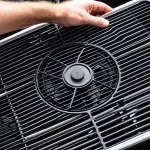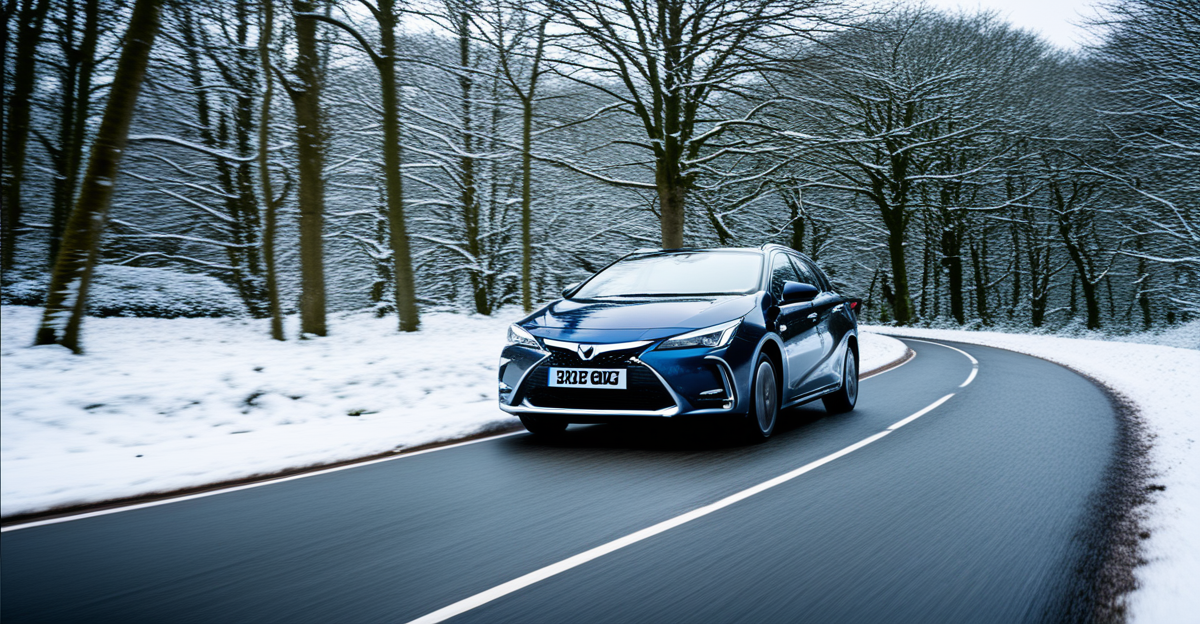Understanding the Challenges of Winter Driving for Hybrid Vehicles
Winter in the UK presents a unique set of driving challenges, especially for hybrid vehicle owners who must adapt to the cold weather. The UK is known for its diverse winter conditions, ranging from heavy snowfall in Scotland to milder, yet damp, climates in the south. These varying conditions can significantly impact hybrid vehicle performance.
One of the foremost winter driving challenges for hybrids is the effect of low temperatures on battery efficiency. Hybrid batteries are sensitive to cold, which can reduce their efficiency and, consequently, the vehicle’s performance. In low temperatures, the chemical reactions within the battery are slowed, so the battery discharges quicker and takes longer to recharge. As a result, drivers might notice a decrease in the efficiency of their hybrid vehicle during the colder months.
Also to see : How to Legally Import a Vintage Motorcycle into the UK: Your Complete Step-by-Step Handbook
Moreover, hybrid engines often rely on the gasoline engine to provide additional heat to the cabin or to warm the battery, which can slightly reduce fuel economy. However, while this dependency on the gasoline engine might increase during colder months, hybrid vehicles generally still offer better fuel efficiency than conventional vehicles despite these challenges. Understanding these unique challenges and regular winter maintenance can help mitigate some of the adverse impacts on hybrid vehicles during the UK’s cold months.
Practical Fuel-Saving Techniques
Hybrid vehicle owners can maximise their efficiency by adopting specific fuel-saving tips tailored for winter driving. One critical consideration is adjusting driving habits to suit colder climates. Slow and steady acceleration, coupled with the anticipation of traffic flow, can significantly improve hybrid driving efficiency. Once up to speed, maintaining a consistent pace without abrupt stops is advisable.
In parallel : Key Steps and Requirements to Obtain Your UK Commercial Driving License: A Comprehensive Guide
Regenerative braking is another key strategy. It allows hybrids to recover energy during deceleration. However, it’s crucial to be mindful of slippery conditions when relying on this feature. Balanced braking, without aggressive application, ensures safer stopping distances while still benefiting from energy recovery.
Maintaining optimal tire pressure is essential in cold weather. As temperatures drop, tire pressure tends to decrease, leading to increased rolling resistance and reduced efficiency. Ensuring tires are inflated to the manufacturer’s recommended level can improve fuel economy while enhancing vehicle safety.
Adhering to these winter driving habits not only conserves fuel but also contributes to a safer driving experience during the challenging winter months.
Maintenance Tips for Hybrid Owners in Winter
Proper hybrid maintenance during the winter is essential for ensuring a smooth and efficient driving experience. The cold can be harsh not only on you but on your vehicle as well, which is why focusing on winter vehicle care can make all the difference.
Battery preservation is a crucial element of winter maintenance for hybrid vehicles. It’s advisable to regularly check battery health and ensure proper charging strategies in cold weather. Keeping the battery warm, perhaps by parking in a garage or using a thermal battery cover, can prevent significant efficiency drops. Moreover, pre-warming the vehicle while it is still connected to the charger can further enhance battery preservation during winter.
Aside from the battery, have essential pre-winter checks done, including verifying that the heating system is functional, antifreeze levels are adequate, and windshield wipers are in good condition. Regular servicing should not be overlooked; it helps ensure components like brakes and tires are functioning at their peak performance, essential for navigating winter roads safely.
Consider these tips for effective winter maintenance, and your hybrid vehicle will be better equipped to handle the challenges that winter months can bring.
Safety Considerations for Winter Driving
Ensuring winter driving safety in the UK requires special attention to the challenges posed by cold weather. For hybrid car owners, hybrid car safety tips become crucial, especially when dealing with slippery roads and snowy conditions. Proper planning and preparedness can make winter journeys smoother and safer.
Choosing the right winter tires is one of the first steps to enhance hybrid vehicle safety. Winter tires are designed to provide better traction in cold weather, ice, and snow. They feature a softer rubber compound that stays flexible in lower temperatures, improving grip and handling on icy roads. Investing in good quality winter tires can significantly reduce the risk of accidents, allowing safer commutes during the harsh winter months.
When driving in snow, keep in mind the importance of maintaining a consistent speed and avoiding sudden maneuvers. Accelerate and decelerate gently, to maintain control and prevent skidding. It’s also vital to increase the following distance from other vehicles, as stopping distances increase on slippery surfaces. Practicing patience and planning extra time for your trips can help ensure safety during winter driving.
Having a well-equipped emergency kit is another critical aspect of winter driving safety. An emergency kit should include essentials such as a flashlight, warm clothes, blankets, ice scrapers, and a first aid kit. Additionally, carrying non-perishable food and water can be beneficial if you find yourself stranded during severe weather. Being prepared for any situation enhances your readiness and ensures peace of mind while on the road.
By considering these safety strategies, hybrid vehicle owners can navigate winter conditions with greater confidence and security.
Comparing Hybrid and Conventional Vehicles in Cold Weather
When assessing hybrid vs conventional cars during the frigid winter months, it’s essential to consider their performance differences in these challenging conditions. Hybrids are known for their superior fuel efficiency; however, certain factors influence their performance in cold weather.
One of the main characteristics that set hybrids apart is their battery reliance. While traditional vehicles primarily rely on internal combustion engines, hybrids utilize both an electric motor and a combustion engine. In low temperatures, hybrids may experience decreased battery efficiency, which can slightly impact their overall efficiency. Despite this, hybrids often maintain better fuel economy compared to conventional cars due to their hybrid systems that optimize fuel use.
Real-world experiences and studies indicate that hybrid vehicles, though affected by colder temperatures, consistently outperform conventional cars in terms of fuel efficiency. Many drivers report that even in winter conditions, the fuel savings from hybrids offset any performance declines due to battery inefficiencies.
Overall, while hybrids may experience unique winter performance variations compared to conventional vehicles, they continue to offer significant fuel efficiency advantages in winter driving scenarios. This makes them a compelling option for environmentally conscious and cost-savvy drivers tackling the UK’s winter roads.
Region-Specific Advice for UK Hybrid Drivers
Navigating UK winter driving tips requires understanding the distinct weather patterns across various regions. Scotland, for example, often experiences significant snowfall and icy roads, demanding robust preparedness such as investing in quality winter tires for better grip. Meanwhile, areas in southern England tend to face milder yet damp conditions, which can still affect hybrid vehicle performance by increasing wear on brakes and tires.
Regional driving conditions in the UK not only vary but also come with specific local driving regulations and recommendations. For instance, certain areas may have restrictions or requirements regarding snow chains or specific tire types. Awareness of regional regulations ensures compliance and enhances safety during treacherous winter drives.
Hybrid advice tailored to localized conditions can greatly improve driving experiences. For drivers in coastal areas prone to moisture and salt on roads, regular vehicle maintenance to prevent rust and corrosion is crucial. Conversely, in areas with frequent black ice, utilizing regenerative braking and maintaining a safe speed and following distance are beneficial practices.
Access to real-time weather and road condition updates can be vital for planning journeys. Many regional services offer updates to keep drivers informed, helping them avoid hazardous routes and unexpected delays. By adopting these specific strategies, UK hybrid drivers can enhance safety and efficiency throughout the winter months.











